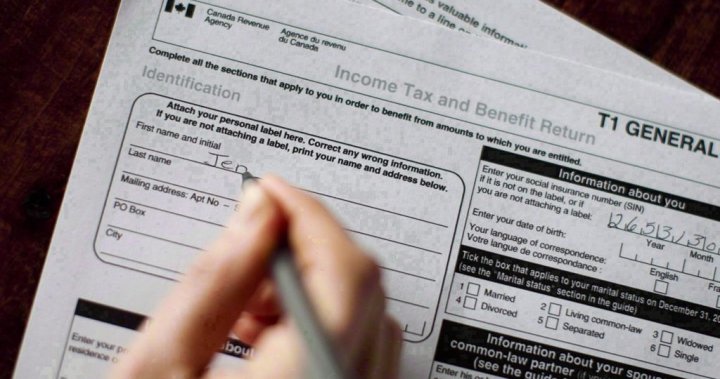The head of the Bank of Canada says there’s a “limit” to how much Canadian monetary policy can diverge from the United States as market watchers see earlier cuts coming north of the border.
Governor Tiff Macklem was asked about the impact of U.S. monetary policy on the Bank of Canada’s interest rate path during an appearance at the House of Commons standing committee on finance Thursday morning.
He said the Bank of Canada’s benchmark interest rate, which remains at five per cent following six consecutive decisions, doesn’t need to mirror monetary policy from other central banks around the world.
But he added that there’s a “limit to how far they can diverge.”
“We’re not close to that limit. We have the ability to run our own monetary policy geared to what Canadians need,” he said.
The Bank of Canada’s policy rate is already lower than that of the U.S. Federal Reserve, which on Wednesday maintained its interest rate range of 5.25-5.5 per cent.
Jerome Powell, Macklem’s counterpart south of the border, said then that inflation was proving more stubborn than first thought, and that it “will take longer than previously expected” for the Fed to have the confidence it needs to cut interest rates.
James Orlando, director of economics at TD Bank, says a gap between Canadian and U.S. interest rates can weaken the exchange rate between the loonie and the U.S. dollar because investors gravitate to the American greenback to benefit from the higher rate.
The loonie sits at 73 cents to the U.S. dollar as of Thursday afternoon, though Orlando notes it has floated between 72 and 76 cents through much of the past year.
With market expectations for the Bank of Canada to cut interest rates in June or July followed by the Fed in November or December, Orlando says the widening differential between the rates is expected to put “even more pressure on the Canadian dollar” in the months to come.
Macklem noted to MPs on Thursday that with those market expectations already factoring into the CAD-USD exchange rate, some of the impact of those earlier moves has likely already been priced in.
Financial news and insights
delivered to your email every Saturday.
The Bank of Canada does not target a specific exchange rate for the loonie in its mandate; the central bank’s focus is on price stability and achieving two per cent annual inflation.
Inflation has eased significantly in Canada from 40-plus-year highs two years ago, coming in at 2.9 per cent in March. That compares with 3.5 per cent in the U.S.
Stalled progress south of the border in taming inflation has pared down expectations for the Fed’s rate-cut pace back compared to the start of the year.
But a weaker loonie can have drawbacks on the Bank of Canada’s inflation-fighting progress. A lower exchange rate for the Canadian dollar makes imports from the U.S. and some other global markets more expensive, which can drive up consumer prices and refuel inflation.
National Bank of Canada published a report Thursday looking at exactly how much prices could rise if the two central banks’ policy rates were to diverge significantly.
Authors Warren Lovely and Taylor Schleich wrote that they’re not convinced by arguments that the Bank of Canada rate cuts would be “counterproductive” to the inflation fight.
Wider rate gaps between the Bank of Canada and the U.S. Fed than today are “not uncommon,” the author wrote.
The pass-through of higher prices on imports to consumers is also “smaller than widely appreciated,” the report notes.
A hit of 10 per cent in the loonie’s value compared with the U.S. dollar would only add about 25-30 basis points to core inflation, the economists said, citing research models from the Bank of Canada itself.
While there is probably a level of depreciation in the loonie that would stoke concern among the Bank of Canada, Lovely and Schleich argue “it’s entirely reasonable the (central bank’s) policy rate could fall 100 bps below the Fed’s without policymakers batting an eye.”
Orlando agrees that fears about the exchange rate won’t be enough to hold the Bank of Canada back from an earlier rate cut, the first of which he pegs for the central bank’s July meeting.
But after that point, he suspects Canadian monetary policymakers will be reluctant to move too far too fast with the U.S. Fed lagging behind.
“The Bank of Canada is probably going to be hesitant on how quickly it wants to cut interest rates, because it doesn’t want to get too far ahead of the Fed,” he says.
The interest rate tightening cycle has had a bigger impact north of the border than in the U.S., Orlando explains, thanks largely to the “heavily indebted” Canadian consumer.
After the 2008-09 financial crisis, U.S. consumers deleveraged – got rid of their debt – at a significant pace, Orlando says. That’s made them less sensitive to higher borrowing rates than their Canadian counterparts.
Americans also tend to take out longer terms on their mortgages, upwards of 30 years, while Canadians are renewing their rates typically every five years or earlier, providing a more rapid transition of monetary policy, Orlando says.
Those differences have allowed the U.S. economy to remain strong in the face of higher interest rates while Canadian spending trails off, he explains.
But Orlando believes the Bank of Canada is being cagey about its rate cut timeline because it’s wary of a resurgence in the Canadian economy that mirrors the U.S. case. While he doesn’t expect those conditions to materialize, any signs such as rises in employment or wages could lead to an uptick in spending that fuels inflation and pushes the rate cut timeline back for the Bank of Canada.
Alternatively, growing geopolitical risks – including the U.S. election set for November – or other factors that dampen the already struggling Canadian economy could force the central bank to the rate cut table earlier and more frequently, Orlando says.
“The direction is towards cuts around July, with a fairly reasonable pace of cuts thereafter,” he says. “But there’s all these things you’ve got to look out for to see if that narrative is changing, to see if there’s something that should push the Bank of Canada’s hand one way or another.”




